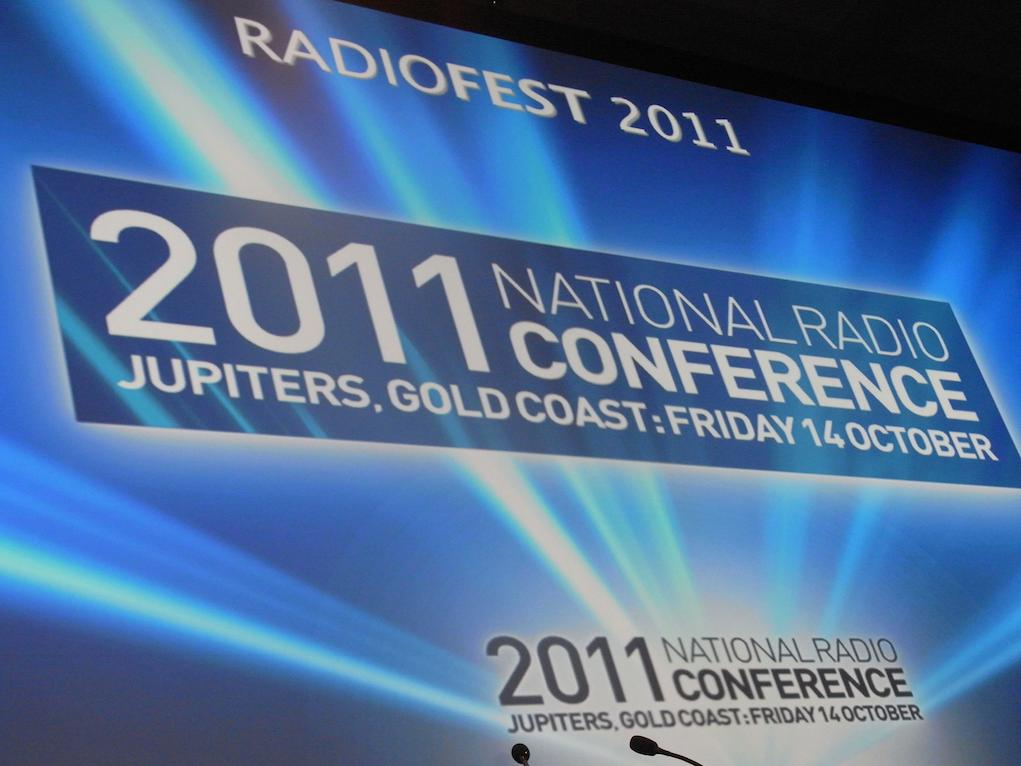In this afternoon’s ‘digital world’ session at the commercial radio conference, key discussion points covered the latest in Apps and a case study on what ARN is doing with digital radio. Rebekah Horne (DMG), Jason Malaure (All in Media) and Nick Condon (ARN) looked at what is happening in the digital world.
Jason Malaure told the audience about Apps. An example from Nova showed that most app radio consumption is from a local audience. “Local listeners in the listening area are choosing to listen through their phones.”
The ability to track apps shows that when stations promote the app on air consumption immediately goes up. “They will discover your app on air.”
There is a lot of fragmentation in the mobile phone market says Malaure. “iPhone is the most popular platform, but Android is growing fast and Nokia is becoming less relevant,” said Malaure.
What works and what doesn’t for apps?
“Listeners do want a live stream, but they want more now too. They want to listen to previous shows, rate the music, and they want to be able to interact.”
Malaure also showed how some station apps include an alarm clock so that listeners can wake up to their favourite presenter.
“You can make money if you’re smart. It’s not just about putting up a banner add. And if you’ve got listeners on the app, you can ask them what they like and how they listen and get great audience research direct from your listeners.”
Using stats to personalize the app experience for consumers is the latest thing, including personalized advertising, favourite song flags and other personalized functions in the app.
Nick Condon gave a rundown of the latest on digital radio. “The fact that digital is going so well is because the whole industry is working on it together.”
He urged stations to adhere to the new standards for audio production which have been implemented with the introduction of digital radio.
Discussing the progress of digital radio Condon urged regional radio delegates to start thinking of what their markets need now so that when they get more channels through digital radio they will be ready to provide new relevant content.
Rebekah Horne discussed social media. In 2006 it was about transforming communications and connecting grups. Now, all media is becoming social. People want to pull and push information through their media and want to interact with us in many ways.
It has changed the way people consume content. It’s not just about facebook and twitter, it is also about YouTube and the many vision and social commerce sites. Her advice is “fish where the fish are,” use all these platforms if there are audiences there.
She says radio has always been about time spent listening, but in social media it is about time spent engaging.
Each platform attracts a different audience. We need to work hard to make sure all those platforms work hard for radio. She also said mobile consumption of social media sites is now growing very rapidly.
Horne believes social media is becoming a common part of the Australian media landscape. There are 10.3 million people using facebook spending almost 7 hours a week on it. All social media sites are growing at similarly fast rates.
She reminded radio people that social media is not just about pushing out your promotional messages, it is a relationship where your listeners want to engage and share with you.
She disagreed with Condon’s view that “if we build it they will come.” She says “build it then work hard to make sure they come.”

